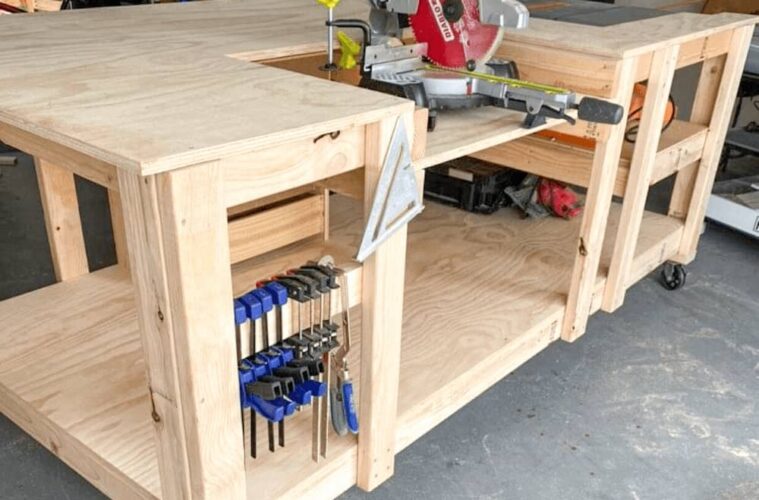The table saw has long become part and parcel of an enthusiastic DIYer’s toolkit, and for a good reason. Apart from being a highly efficient tool for making longer cuts, it can bring your user experience to a new level while working with gummy materials such as plywood or simply serve as a second option if you like to switch from rip cutting to crosscutting in no time.
Of course, the broad scope can only be mastered if you know how to make the best of your tool. This article explains the essential dos and don’ts to follow with a table saw for beginners for smooth, efficient, and safe operation.
What Exactly Is a Table Saw?
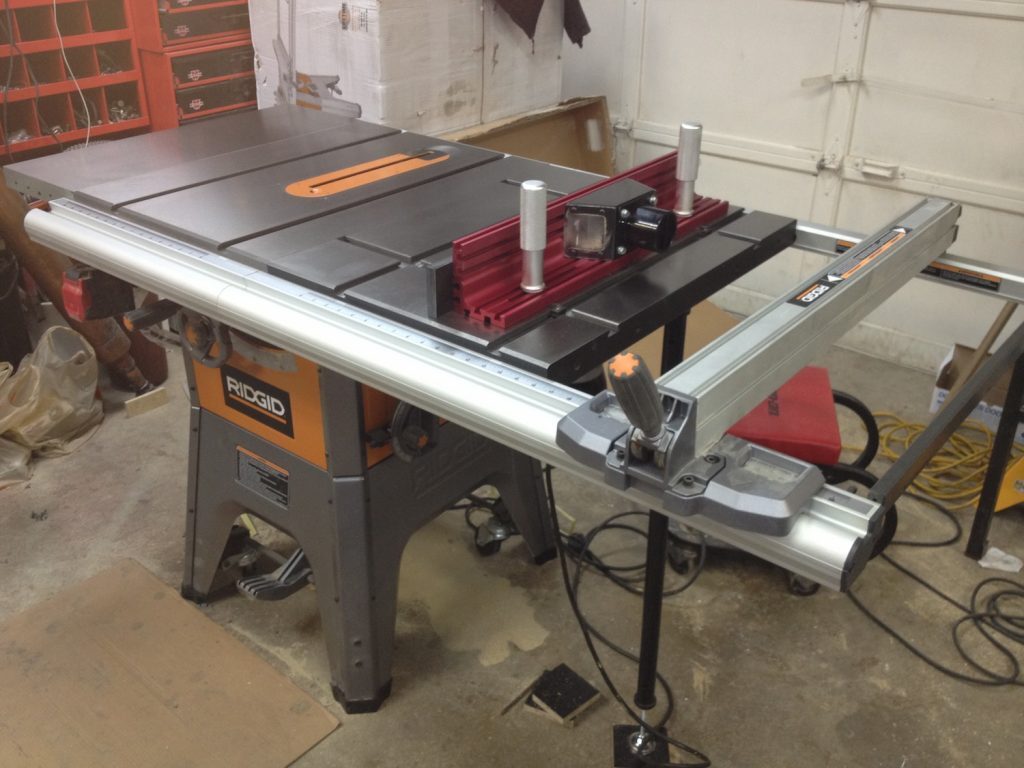
source: en.wikimedia.org
The chief purpose of this section is to spare you terminological confusion. A table saw is a kind of saw setup where a circular blade that’s mounted on an arbor protrudes over the table’s surface. The table thus provides additional support and restriction.
What Can I Do with My Table Saw?
Table saws have many uses depending on your specialization, most of which fall into one of the cut type categories below. There are other, more advanced cuts such as miter, dado and rabbet cuts that are possible with a table saw but rarely occur in beginners’ practice, which we will not be covering in this article.
Rip Cuts
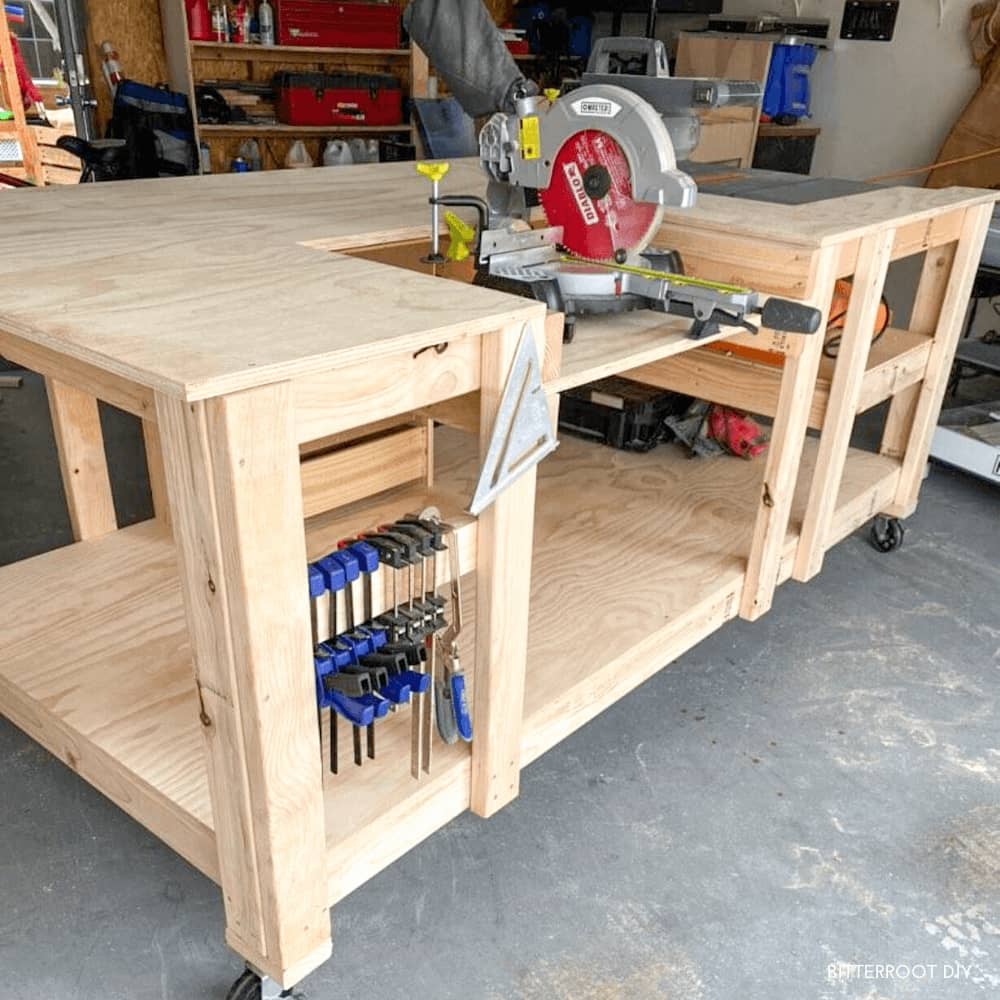
source: bitterrootdiy.com
The term refers to cutting a piece of wood along the grain. Alternatively, the same process is sometimes described as “cutting to width”. This fundamental technique requires the use of a rip fence with the stock positioned flush against it for accuracy as well as safety.
Crosscuts
The opposite of a rip cut, a crosscut is a cut made perpendicular to the wood grain and is also referred to as “cutting to length” because it essentially chops off an end of the board. Here, accuracy depends heavily on a properly aligned miter gauge (not the rip fence).
Tune-Up Tips
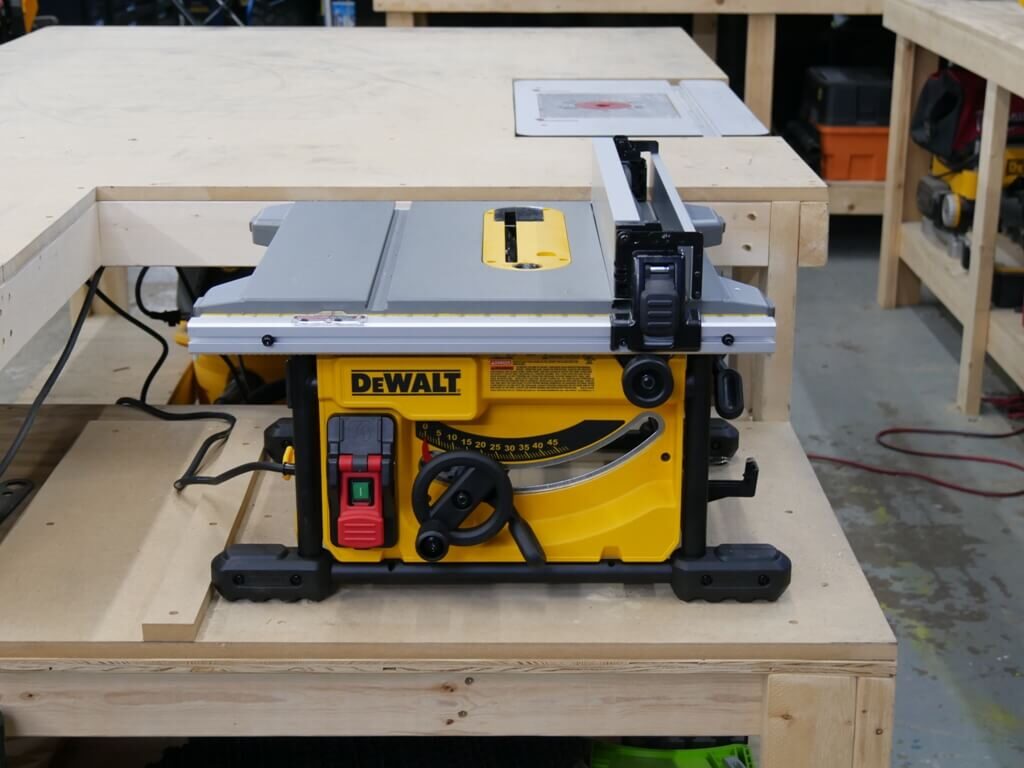
source: toolsinaction.com
There are a number of crucial steps to take before you actually start cutting. First of all, you need to adjust the height of the blade as a precaution to minimize potential kickback and reduce the stress on the motor, thus extending the tool’s life. The rule of thumb here is to keep the bottom of the gullet, that is, the gap between any two consecutive teeth, even with the top surface of the stock.
After adjusting the blade, make sure the wood is ready. Depending on the size of the stock, it might be advisable to have a surface to receive the output rather than let it drop onto the floor, which can be risky because the other end will inevitably spring up, causing kickback.
The next stage is to align the appropriate safety guard, that is, the rip fence if you are going to make a rip cut or a miter gauge in case of crosscutting. Using both at the same time is generally a bad idea.
Finally, adjust your position so that you stand out of the blade’s path but close enough to comfortably push the stock using your right hand and hold it against the fence with your left hand at the same time. Remember to keep the piece flat against the table.
Staying Safe
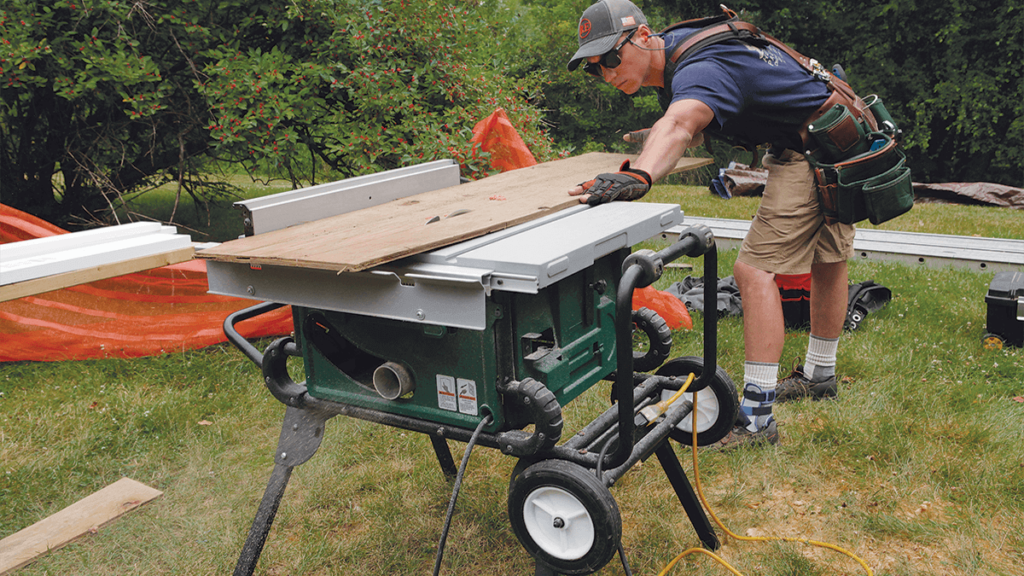
source: finehomebuilding.com
The risk of injury is very real when it comes to woodworking. Even though modern table saws come with enough safety features to relieve even a beginner’s anxiety, it is still the user who is primarily responsible for their health while cutting wood.
Some of the most common hazards associated with table saws are kickback, where the board flies off on being hit by the blade’s teeth, potentially blinding sawdust, and, of course, the danger of losing your fingers. Here are the essential steps to take in order to minimize the risk.
- Do not wear loose clothes or jewelry while using your table saw. If you have long hair, do it up.
- Do not wear gloves as they can interfere with the way you move your hands and are unlikely to protect you against injury.
- Keep pets and children, if any, out of your working area.
- Always wear safety glasses and earplugs while operating your table saw.
- Check your table saw every time before using it. This includes checking blade sharpness, tightness and alignment, throat insert position, and the alignment of appropriate safety features. Make sure the saw is secured properly if portable.
- Stand out of the blade’s line when cutting.
- Use push sticks rather than your fingers to maneuver the stock.
- Do not cut stock that doesn’t have a straight edge, and do not try to rip-cut warped/twisted stock.
- Never stack your stock.
- Always check the stock for nails and other foreign objects before you start cutting.
- Never start the saw with the blade already touching the stock.
- Never try to cut anything in a free-hand manner. Always use an appropriate safety feature such as a rip fence for rip-cutting and a miter gauge for crosscutting (these are not interchangeable!).
- Do not back out of a cut with the table saw running. Either finish the cut or turn off the saw instead.
- Do not release the material too early; always push it past the blade to avoid kickback.
- Do not make any adjustments without previously turning off the saw.
- Always use a throat insert, positioned flush with the table, to reduce kickback.
Cutting Your Way to Perfection

source: amazon.com
Widely known as the woodworker’s workhorse, the table saw can be an immensely powerful tool for beginners and pros alike. You can make it a valuable addition to your toolbox if you start with basic cuts and techniques and follow the manufacturer’s adjustment instructions for optimum precision. Be sure to observe the simple safety rules above, too. These are commonsense precautions not to be discarded even as you polish your woodcutting skill towards perfection — a sure prospect with a versatile tool like a table saw.

